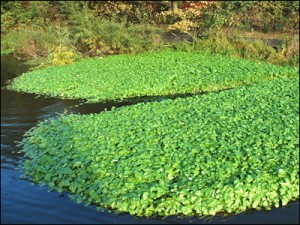 First-hand experience of the damage caused by invasive aquatic plants is not a pleasant one. Once established, they quickly spread, crowding out native species, restricting light and oxygen in the water and creating a threat to fish and other wildlife in their native habitat.
First-hand experience of the damage caused by invasive aquatic plants is not a pleasant one. Once established, they quickly spread, crowding out native species, restricting light and oxygen in the water and creating a threat to fish and other wildlife in their native habitat.
It’s not only the natural environment that is damaged –structures such as bridges are also at risk when these invasive plants become established.
A desire to protect the natural environment is a priority for many, and tackling invasive aquatic plants may require specialist help, from identifying the plant, understanding its growing patterns and choosing the best method of removal.
The government’s recent announcement that five species of invasive non-native aquatic plants are to be banned from sale in the UK is a welcome one. In the first ban of its kind, the following invasive aquatic plants will no longer be allowed to be sold in the UK:
- Water Fern
- Parrot’s Feather
- Floating Pennywort,
- Water Primrose
- Australian Swamp Stonecrop.
These plants were originally sold to grow in garden ponds, but have become established in the wild either through illegal dumping, or inadvertently as even the tiniest fragment can re-establish itself in a different location. The ban means that all retailers will have to stop selling these plants or face a fine of up to £5,000.
However, as the ban does not come into effect until April 2014 these plants will continue to cause damage in many of our rivers, lakes, ponds and wetlands.
If you are experiencing problems with any aquatic weed, and wish to accurately identify it and remove it, we can help.
As supporters of the Defra “Be Plant Wise” campaign the Aquatic Solutions team can help identify and remove invasive aquatic plants effectively, and safely.
For an informal conversation to discuss any invasive aquatic plant call us on 01788 810614, or complete the form below.
Error: Contact form not found.
